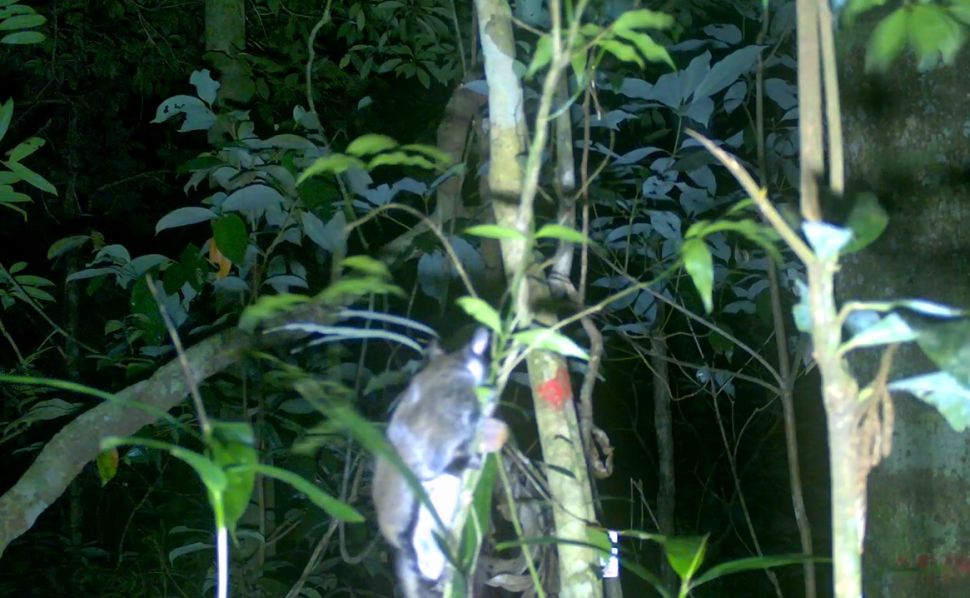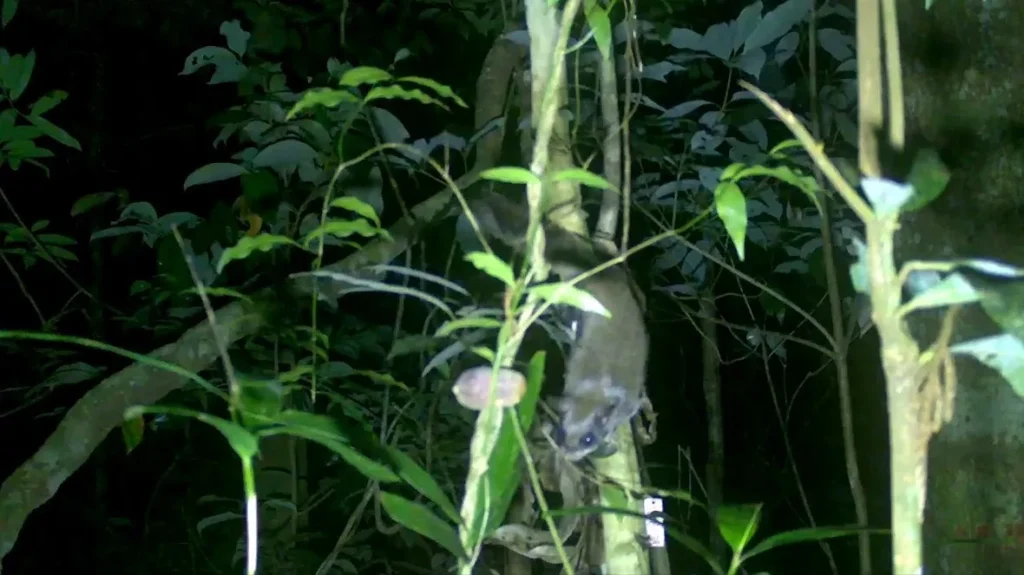Two distinct species of tropical avian gliders have ingeniously devised a strategy – nibbling intricate grooves around nuts before carefully stashing them between the lofty branches of trees. This savvy technique not only ensures the preservation of the nuts but also extends their shelf life, showcasing the remarkable resourcefulness of these airborne rodents.
In the dense rainforests of Hainan Island, China, a quirky behavior among flying squirrels has taken center stage in the wildlife spectacle. These airborne acrobats have unveiled a distinctive method for safeguarding their precious nuts — a technique that sets them apart from their furry counterparts.
Picture this: high above the moist forest floor, Indochinese flying squirrels (Hylopetes phayrei) and particolored flying squirrels (Hylopetes alboniger) engage in an artful act of nut concealment. Instead of the conventional burying strategy, these crafty creatures have adopted a more sophisticated approach. With precision and finesse, they carve intricate grooves into their nuts through diligent chewing.
To unravel this mystery, Professor Han Xu and his team from the Chinese Academy of Forestry orchestrated a technological ballet in the form of 32 strategically placed infrared cameras across a sprawling 13.5 acres (5.5 hectares) of rainforest. The cameras captured 151 nuts cunningly lodged between tree branches, suspended at heights ranging from 5 to 8 feet (1.5 to 2.5 m).
Upon meticulous analysis, the researchers discovered a ballet of a different kind. The flying squirrels, nimble and agile, not only indulged in a nut-nibbling symphony but also demonstrated an artful rearrangement of their treasured caches. The nuts, snugly positioned between Y-shaped tree branches, underwent meticulous adjustments, ensuring a perfect marriage between the grooves in the nuts and the twigs supporting them.
In this rainforest drama, only these two species of flying squirrels have stolen the spotlight with their unique nut-chewing, groove-carving performance. No other creature in this ecosystem boasts a similar skill set, making this behavior a truly extraordinary act in the natural world’s grand theatre. The findings, unveiled in the journal eLife on June 13, add a fascinating chapter to the saga of wildlife ingenuity in the heart of Hainan’s rainforests.

When the researchers checked on the stored nuts three and a half months later, they found the nuts had not germinated. As nuts stored in the ground typically germinate within two to three months, the team think the unique storage technique might help preserve the nuts for longer, said Xu.
“We also think the squirrels may have learned the habit from individuals that first invented the storage technique,” said Han.
Experts who were not part of the study acknowledge that the findings contribute valuable insights into the ways animals adapt to environmental challenges.
“This is an important and valuable discovery on flying squirrels’ hoarding behavior,” Pizza Ka Yee Chow, whose research at the University of Chester in the U.K. focuses on animal behavior and cognition. “The suggestion on storing nuts in the fork of twigs to avoid germination is possible, and it is always interesting to see how animals develop surprising and effective ways to overcome challenges from their environment.”
But the behavior is not so different to previously described squirrel behaviors, said Nathanael Lichti, a landscape ecologist at Purdue University in Indiana. “There are many species of squirrels, chipmunks, and mice that gnaw on seeds to prepare them for storage, Lichti said.
In future, it would be interesting to explore “whether the behavior is learned or innate; do young squirrels do it instinctively, or do they pick it up by watching adults?” said Lichti.
